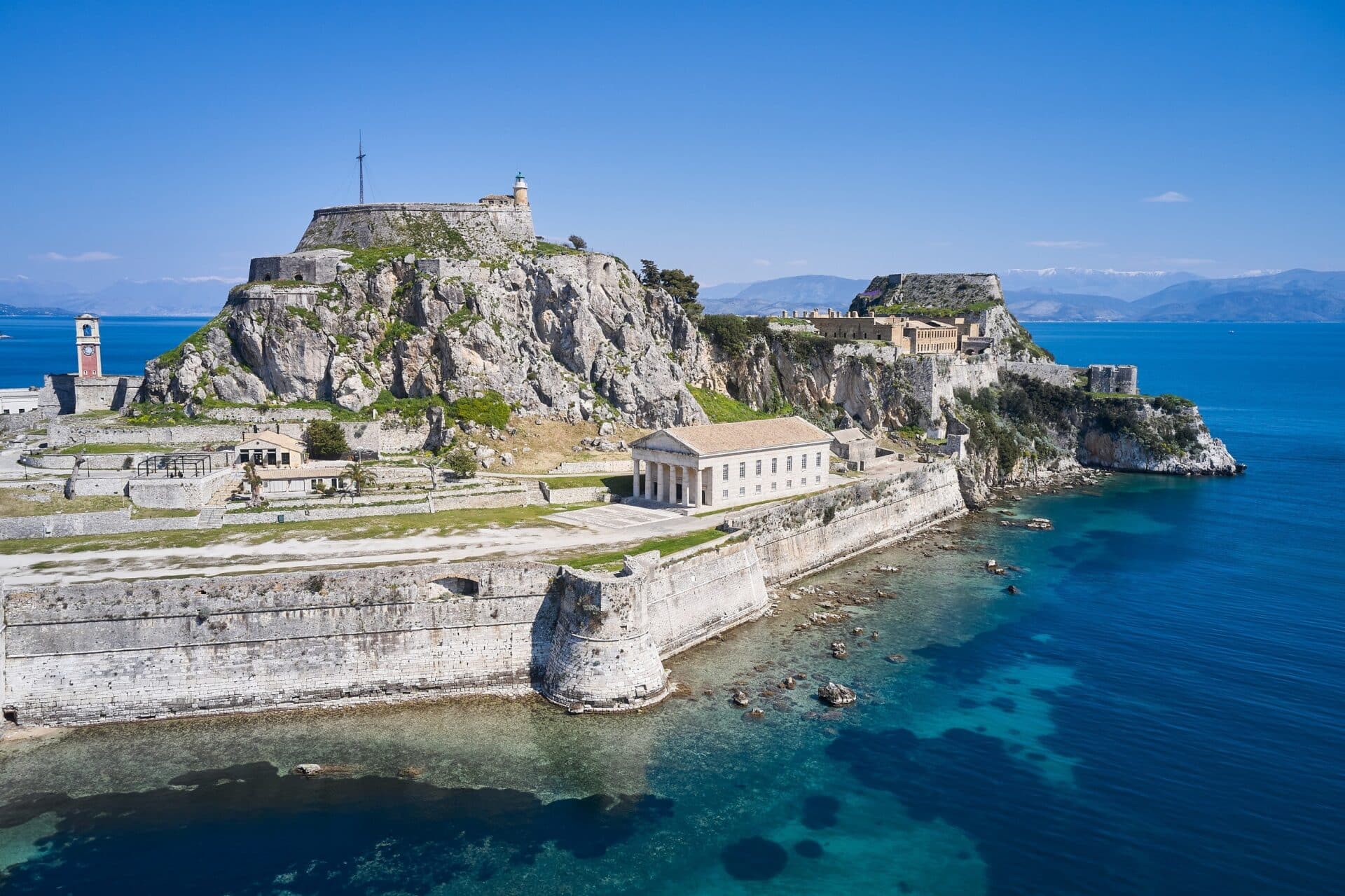

Corfu’s Old Fortress stands as the city’s most imposing monument, visible even from the coast of mainland Greece and drawing countless tourists.
Its history begins in the 6th century AD, when survivors of the Goths settled on a rocky peninsula, later known as Corfu or Korifo. Over time, it evolved from a Byzantine stronghold to a Venetian bastion, fortified against Ottoman threats with strategic upgrades like stone bridges and pentagonal bastions.
Through the centuries, it served various military purposes under different rulers—Venetian, French, English—before returning to Greek control in 1864. Today, it remains a cultural mosaic, housing Byzantine collections, Venetian chapels, and English military buildings, each reflecting a different era of influence and architecture.

With the return of the Venetians to Corfu in 1386, the Old Fortress underwent major reconstruction that defined its current form. It was heavily fortified and became a key defensive point, protecting the island from both Western and Eastern threats.
The fortress was transformed from a peninsula into an artificial islet, encircled by a water-filled moat. Initially, access to the mainland was possible only via a wooden bridge. The original tall, square Byzantine towers were redesigned into lower, rounded forms to reduce the risk of scaling during attacks.
Over time, the fortress became a physical record of the many powers that ruled Corfu. Its architecture reflects layers of history—from the Byzantines and Venetians to the British and modern Greek state.
Remnants of these eras remain visible: the old Venetian prison, the military chapel, the former English military hospital (now housing the Ionian University’s Department of Music), the Church of Saint George built by the British in 1840, and the Clock Tower constructed in the late 18th century.
The Fortress was used at the end of World War II by the Nazis to imprison the Jews of Corfu prior to their deportation from the island. Today, it houses the Public Library of Corfu which is located in the old British barracks. The fortress grounds are also used for various types of art and culture exhibits.
Even the Venetian well at the fortress’s base has found new meaning, now used by visitors as a wishing well, filled with coins and mementos that reflect their personal hopes and experiences.
Accessible year-round, the fortress attracts over 200,000 visitors annually, serving as a testament to Corfu’s resilience and cultural heritage. Whether drawn by history, architecture, or panoramic views, visitors leave with their own stories, preserving memories captured within its ancient walls.
